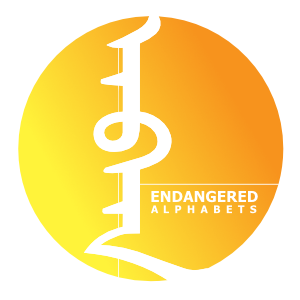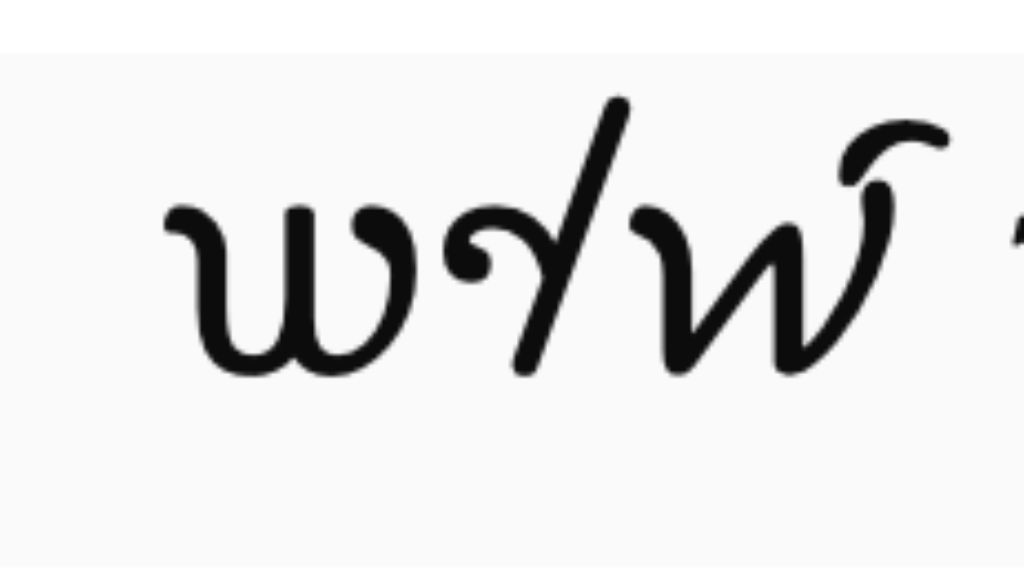Switching Between Scripts
 Switching between languages? Hard enough. How about switching between scripts?
Switching between languages? Hard enough. How about switching between scripts?
Even after working on the Endangered Alphabets for 12 years, I’m still just starting to understand how Eurocentric and provincial my own thinking, like that of most of us in the West, has been, and continues to be.
Despite all my work in scores of writing systems, I can still, like most Westerners, read and write only one. I can recognize a fair number of non-Latin scripts, but I can’t read or write in any of them.
Elsewhere in the world, people are far more script-adept. The average educated person in South Asia may well flow back and forth between three or even four.
In this light, it’s not surprising that the recently-released World Scripts Explorer and Aksharamukha platforms originated in South Asia: they approach the concept of translation as not just a matter of switching spoken languages, but switching scripts.
Vyshantha Simha explained the World Scripts Explorer (WSE).
“I’m an IBM engineer, currently based out of Aachen, Germany originally from Mysore, India. I’m working with Dr. Ganeshamurthy for this SoulofKrishi project.”
The WSE is a digital editor that can switch between the different keyboard layouts of an astonishing range of scripts, from the mainstream to the extremely rare.
The project, he explained, was inspired by three pillars of thought.
“The first was that when I was reading the book In Search of the Cradle of Civilization towards end of 2020, I came across a discussion about indigenous or endemic roots, which got me thinking.
“Secondly, I thought about how when one learns a language with a written script, they likely have a mental image of how they perceive that writing system and such a visual model could be best mapped to a potential keyboard layout, which would ease the way one writes any digital content rather than having to use a superposed QWERTY-based layout all languages or scripts.
“Thirdly, since my younger days, I have been encouraged by my parents and elders to ensure that our community, called Sankethi, should keep to our tradition, way of life & keep our language alive.
“From those I excerpted the values such as how or why one should conserve and preserve one’s own knowledge system. With this concoction of thoughts and after some day-dreaming in early 2021, I had a small prototype about the website.
“This ideation process gave me a purpose to work towards during my non-office hours and that was to build a system that could aid anyone in making their own content, be it in a single script or a mixed scripts, with ease. Thus that tool helps conserve the use of ancient, classical, old, constructed & modern writing scripts.
“The year-long journey to understand & learn how a person might perceive their language or a written script was exciting, given at that time I was probably naïvely aware of a mere 30 types of scripts and I could only read a handful of them. Having come from a south Indian background, I was exposed to Kannada, Hindi, Sanskrit & English in schooling. After a bit of light reading online, building a keyboard layout for the Indic scripts (Abugida scripts) based on the mental map equivalent was easy to create. Similarly developing the layouts for Alphabetic type scripts like English, German, Greek, or Cyrillic etc. was possible. However, the harder challenges lay ahead.
“The initial hard task was to understand the writing systems that I am not exposed to at all, like those from Caucasian Mountains or Levant Fertile Crescent or from Mongolia or Sahel of Africa. Spending time into the wee hours for many days at end, I finally managed to channel my energy to read up how any writing system works–what are the character set, writing style, orientation of writing, sound system representation, diacritics usage, tonal variation indication, punctuations, etc.
“I realized how hard it is to couple writing systems such as CJK [Chinese/Japanese/Korean] scripts with the model I had intended, given that the layouts would grow massively if all the characters would be added. That is when I discovered Pinyin and Zhuyin (Bopomofo), how cleverly engineered layouts should work.
“The semi-automated layouts weren’t going to fit the Old Berber script (written from bottom to top and right to left), or for Ogham (which was generally writing from bottom to top), or for Boustrophedon writing style for several of the Old Italic scripts, Tartessian, Woleai, Asomtavruli, Luwian, Safaitic, Moon or Variable Writing style of Mayan, Orkhon, Ancient Egyptian. These presented real coding challenges to incorporate them in the tool and then engrain the text writing and layout orientation direction so that it complies with the norms, and this dictated re-engineering of the design. Thus finding similar patterned scripts to CJK helped me fast track the work for Nüshu, Tangut, Kulitan, Meroitic, and Indus scripts, as well as Ogham, Batak, Hanunuo, Tagbanwa and many others.
“I was intrigued by the facts that I learned–such as that Beria/Zaghawa was inspired by livestock branding, how the Canadian Aboriginal writing system may have been inspired by Devanagari script, the pictorial numeral system, Kaktovik Iñupiaq, which is easy to grasp & use for large mathematical operations, and the syllabic writing systems from Africa like Loma, Mende, Nwagụ Aneke, Vai, Bamun, Ge’ez, etc. which are organized in palpable logical blocks and are represented with beautiful artistic characters.”
He acknowledges that the platform is still in the process of development—a process he envisions as interactive.
“Given I built this knowledge system about all writing systems from everyone in the world, via the Internet, through a plethora of articles, blogs, videos, etc., I felt more fulfilling to give this tool back to society for free and also allow others to embellish it.”
Aksharamukha is essentially a multi-script writing/editing platform. Vinodh Rajan, its creator, explains.
“It started as a simple attempt to transliterate between the major Indian scripts, particularly Tamil. around 2009. I mean there were already resources but in many cases, the results were not very readable. They spectacularly failed for Tamil, at least. So, I wanted something that would generate something that’s more readable (even if it’s in an alien language). I also wanted to provide various options that will allow users to tweak the output according to their needs.
“Currently, Aksharamukha supports 97 scripts and I’m in the process of adding two dozen more! If one wants to write Pali in Lao Tham, Sanskrit in Soyombo, or Bhojpuri in Kaithi, at the click of a button there is at least one small corner on the internet that allows them to do so.”
It’s especially interesting that both authors recognize that the act of creating a modern tool that incorporates sophisticated digital processes, they are also serving traditional languages, scripts, and cultures.
“At the end of the day,” Vinodh said, “scripts are part of our shared cultural heritage as humans and they are the collective product of various scribes painstakingly copying texts by hand, in many cases over two millennia. It’s only reasonable that we provide tools that sustain them and let them co-exist and prevent them from disappearing into oblivion. At least to me, a script is alive as long as there is at least one person somewhere generating something with it.”
The graphic at the head of this post, by the way, was generated by Aksharamukha when I entered “yes yes yes” and asked for output in Ahom, Avestan and Hanunuo.
And if you find this content interesting, please consider supporting our Kickstarter!
This post is sponsored by our friends at Typotheque, Rosetta, and Solidarity of Unbridled Labour.




